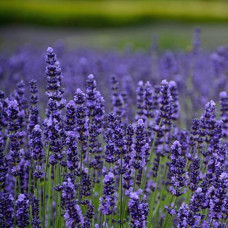Product Information
This reliable, dwarf, compact strain of English lavender bears masses of fragrant dark lavender-blue flower spikes. The nectar-rich flowers are particularly attractive to bees.
Lavender makes an excellent low hedge or path edging where the perfume can be appreciated as you brush past evergreen, grey-green foliage.
More Information
| Suitable for Hanging Baskets? | No |
| Suitable for Patio Containers? | Yes |
| Scented? | Yes |
| Plant Type | Shrub |
| RHS Plants for Pollinators | Yes |
| Botanical Name | Lavandula Angustifolia |
| Planting Position | Full Sun |
| Eventual Height | 40-50cm (16"-20") |
| Eventual Spread | 60cm (24") |
| RHS Award of Garden Merit | No |
| Hardy Perennial | H5: hardy in most places throughout the UK even in severe winters (-15 to -10) |
| Flower Colour | Lavender Blue |
Growing Advice
Lavender is a tough plant but like most plants, will thrive when the conditions are just right. The ideal place to grow lavender in the UK is on a site with well-drained neutral soil in an open and sunny position in a South or West facing position. Lavender will thrive in seaside location with sandy soil conditions and can tolerate windy sites.
Lavender hates its roots being in a wet and soggy position in the garden especially in the winter months so it is worth considering that you can provide the best conditions for these aromatic plants to be able to flourish. Lavender can grow very well in a containers and make a good edging plant for a pathways.
Space around 12-18" (30-45cm) apart and ensure that you water the plants in well.
At the end of the first season August/September, trim your lavender plants back hard into a rounded mound shape.
In subsequent years trim over lightly in spring to encourage flowering and then in September give them a harder trim. Do not cut into old wood as this generally does not regrow. Most lavenders have a lifespan of around 5 years but this can vary with the degree of care given and soil conditions.
Lavender - Munstead
- Brand: Greenacres Nursery
- Product Code: pl-lav-muns
- Availability: Pre-Order
-
From: £2.49


